Table of Contents
DISCOVER THE HISTORIC CITY CENTRE OF NAPLES – PART I
Naples is definitely like no other city in Europe. You may love its gritty urban landscape and vow to return the moment you leave, or you will most probably hate it. Its untamed original spirit retains a selection of outstanding elements of the city glorious past and many of its amazing monuments may still be seen in their popular context. Naples is indeed an ancient and compelling city, whose richness requires from every tourist will to explore, time and above all some knowledge of the extraordinary Neapolitan history. So let’s get started!!!
THE CENTRO STORICO AND SPACCANAPOLI
The Centro Storico (Historic Centre) is the original core of the ancient city and a Unesco World Heritage Site since 1995. The orthogonal grid of the Greek foundation of Neapolis is still discernible and continues to provide the basic form for the present day urban structure of the city centre. Spaccanapoli is the road artery of the district that divides Naples in two halves and one of the east-to-west streets from the original Greco-Roman city. Teemed with people, this cobblestone narrow street holds many interesting monuments, shops, and historical building and is mainly a pedestrian area.
PIAZZA DEL GESU’
The square has been for centuries the main western entrance to the city centre and took on its modern proportions only in the 16th century after several modifications. Nowadays the piazza is ornated by the Guglia dell’Immacolata (spire) dating back to the 18th century and is dominated by the impressive silhouettes of two outstanding monuments: the Chiesa del Gesù Nuovo and the Monastero of Santa Chiara.
CHIESA DEL GESU’
The Chiesa del Gesù Nuovo (New Jesus Church) is an architectural surprise with a diamond-cut facade hiding a sumptuous Baroque interior. The unusual exterior belongs indeed to the 15th-century Palazzo Sanseverino successively converted into the 16th-century church. Don’t let the austerity of the outside deceive you! The rich interior is a blast of Baroque and is literally brimming with architectural and artistic treasures by famous artists such as Francesco Solimena, Luca Giordano and Cosimo Fanzago. The church is moreover the final resting place of local saint Giuseppe Moscati, a doctor who dedicated his whole life to the poors: just in the right transept you can visit the Rooms (a kind of museum) dedicated to the saint with a replica of the great man’s study and the armchair in which he died.
Tickets: Free Entrance
Opening hours: Mon – Sun 7,00 -12,30 pm and 4,00 -7,45 pm
MONASTERO DI SANTA CHIARA
On the opposite side of the Chiesa del Gesù Nuovo stands the medieval complex of Monastero di Santa Chiara (St Claire Church) , commissioned by Robert of Anjou for his wife Sancia of Maiorca, to house 200 monks Franciscan and the tombs of the Angevin royal family. The majestic church, transformed internally during the 18th century and lately restored as a result of the tragic bombing in 1943 to its original French Gothic style, hosts nowadays a collection of damaged royal funeral monuments and early frescoes. Adjoining it is the basilica’s impressive large cloister, a peaceful garden decorated with brightly coloured 18th-century majolica tiles.
Church
Tickets: Free Entrance
Opening hours: Mon – Sun 7:30 1:00 pm – 4:30 8:00 pm
Cloister
Tickets: € 6.00
Opening hours: Mon – Sat 9:30 am- 6:00 pm – Sun 10:00 am – 2:30 pm
PIAZZA SAN DOMENICO
This small and lively square along Spaccanapoli street, is ornated with the 18th-century Guglia di San Domenico (spire) designed by Francesco Antonio Picchiatti, Cosimo Fanzago, and Domenico Antonio Vaccaro to honour St Dominic for stopping the plague epidemic of 1656. In the background of the piazza, the sheer size of the Chiesa di San Domenico Maggiore whose actual entrance is on the other side of the building facing an inner courtyard.
CONVENTO DI SAN DOMENICO MAGGIORE
The Convento of San Domenico Maggiore (Convent of St Dominic Major) together with the impressive church forms a complex of majestic proportions and it is the final result of centuries of progressive stratifications and modifications that began in the 13th century when Pope Gregory IX sent a small community of Dominicans to Naples. The church itself, completed in 1324 thanks to Charles I of Anjou, was, together with St Claire, the royal church of the Angevins. The interior is an amazing mingle of polychrome marbles, gothic architecture, golden decorations and incredible artworks such as the 13th-century Crocifisso that is said to have spoken to St Thomas Aquinas. The sacristy (paid admission) features a beautiful ceiling fresco by Francesco Solimena and 45 coffins of Aragonese princes and other nobles.
Church
Tickets: Free Entrance
Opening hours: Mon – Sun 10:00 am – 6:00 pm
Sacresty
Tickets: € 5.00 or € 7.00 (Guided Tour)
Opening hours: Mon – Sun 10:00 am – 6:00 pm
CAPPELLA SANSEVERO
This outstanding baroque chapel, hidden in a narrow alley close to St Dominic Square, houses Giuseppe Sanmartino’s incredible well-known sculpture, Cristo Velato (Veiled Christ). Built at the end of the 16th century to accommodate the tombs of the di Sangro Family, the chapel was modified to its current baroque layout by the Prince Raimondo di Sangro, Queues here can be pretty long so it would be better to purchase the entrance ticket online in advance for skip the line entry to the chapel.
Tickets: € 7.00 (adults) – 10 to 25 years old € 5.00 – Kids under 9 years old free entrance
Opening hours: Mon – Sun 9:00 am – 7:00 pm (Closed on Thursdays)
These highlights of Naples are part of our guided tours Tasting Naples and Discover Naples on foot
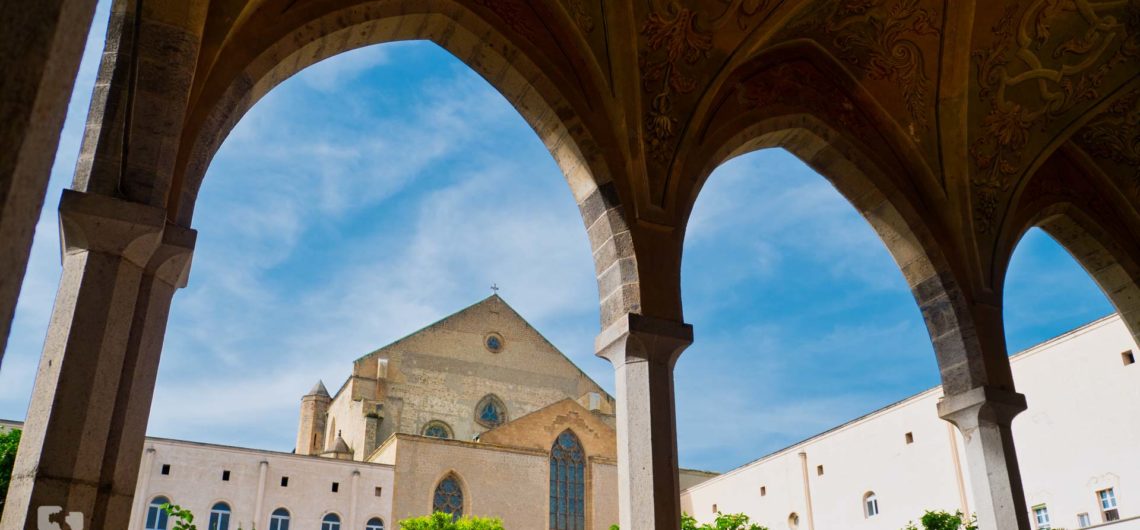
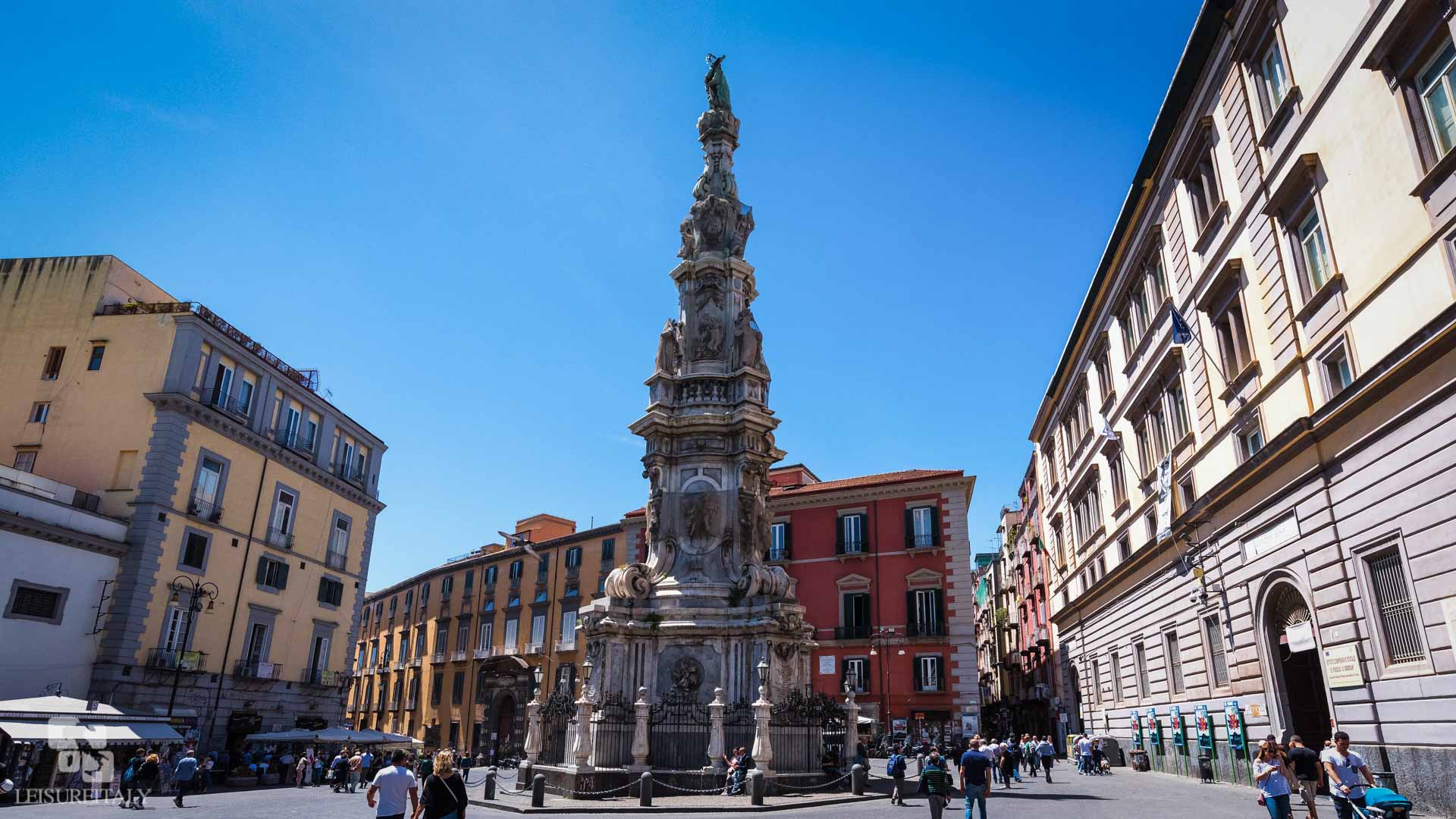
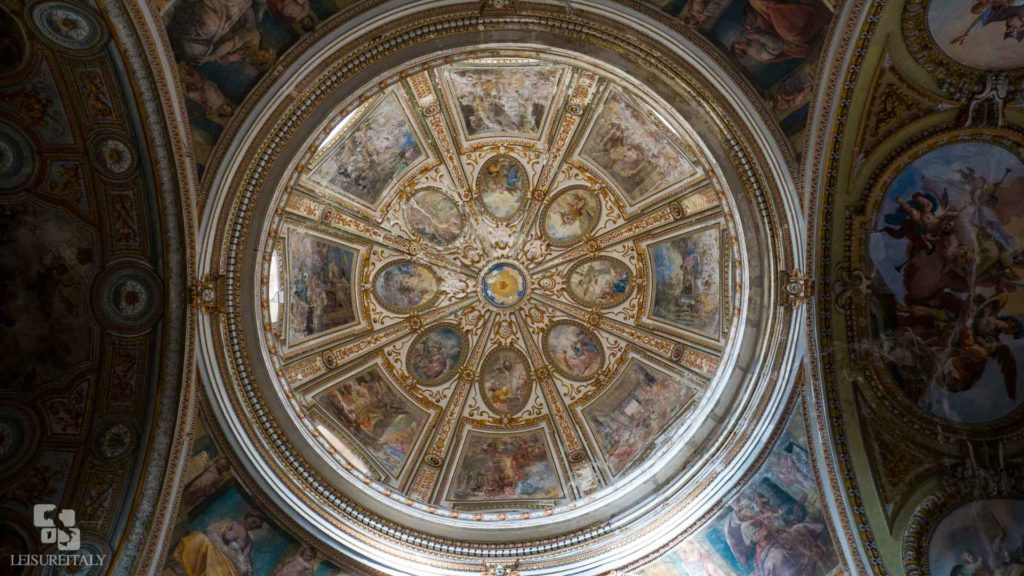
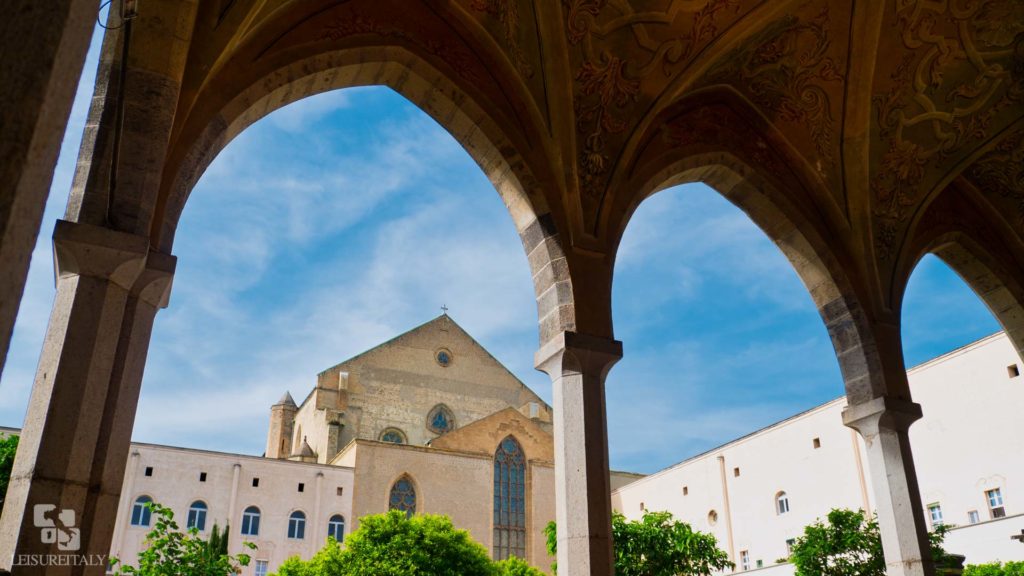
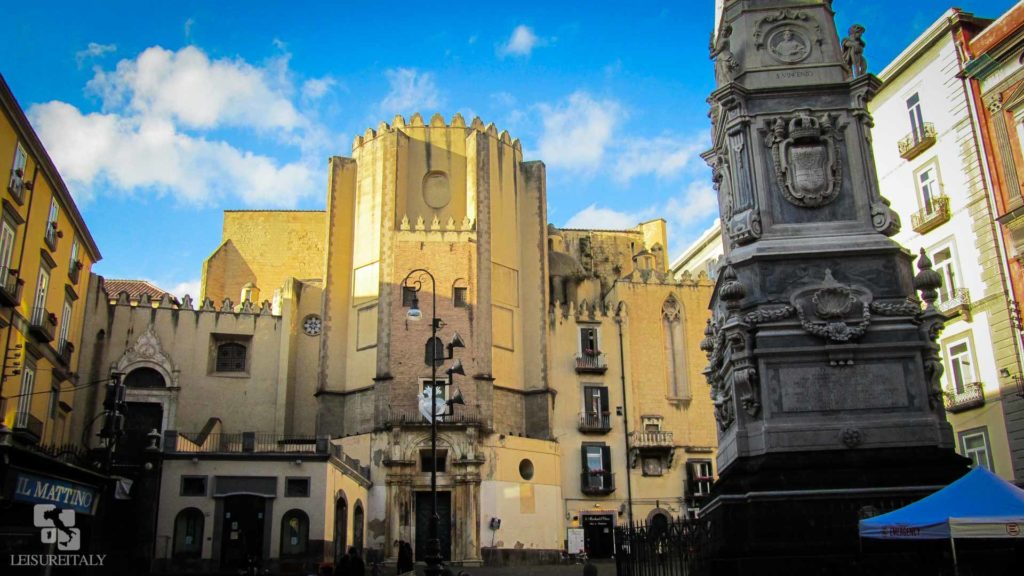
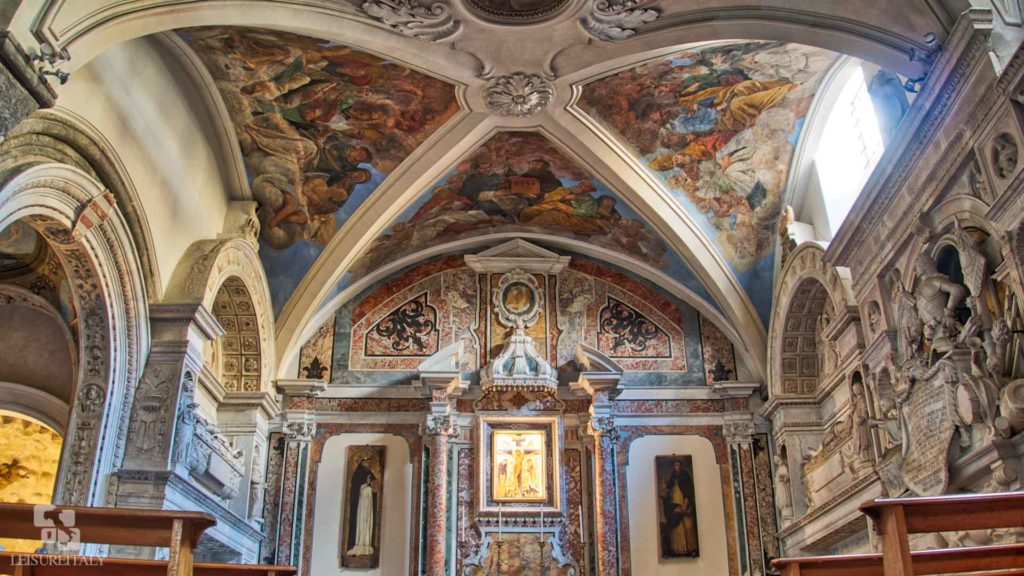
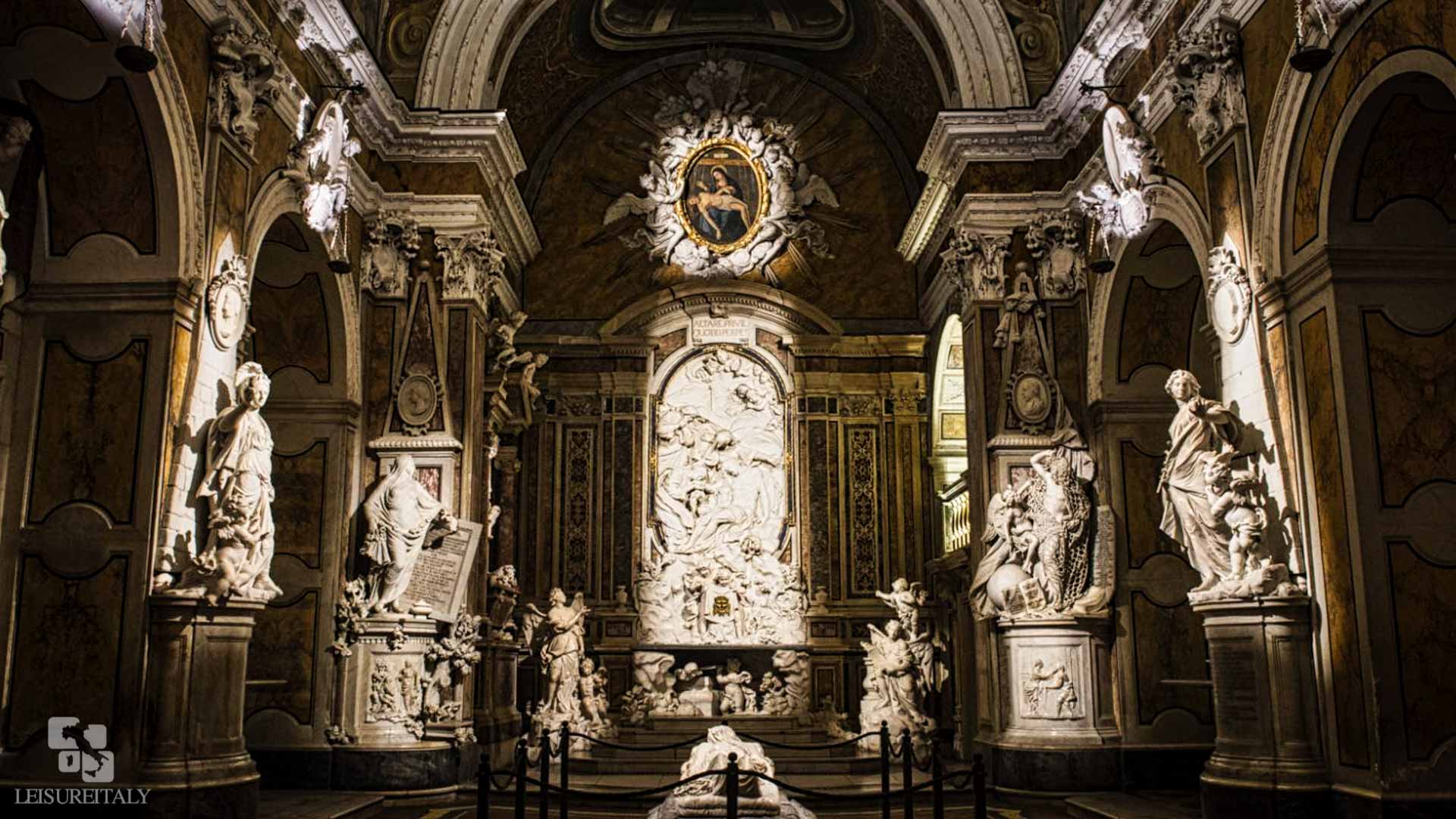
Comments